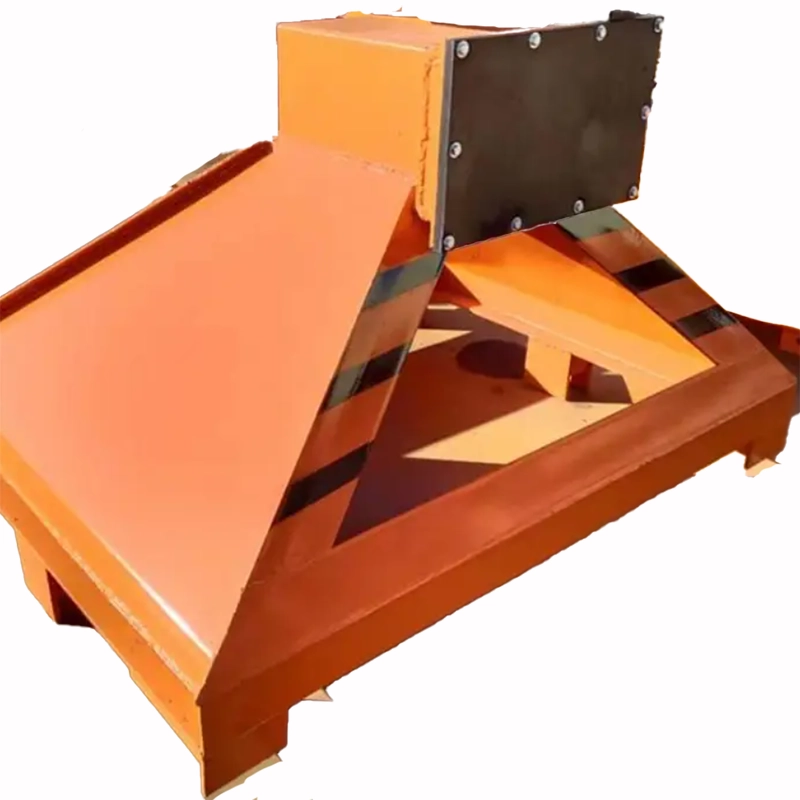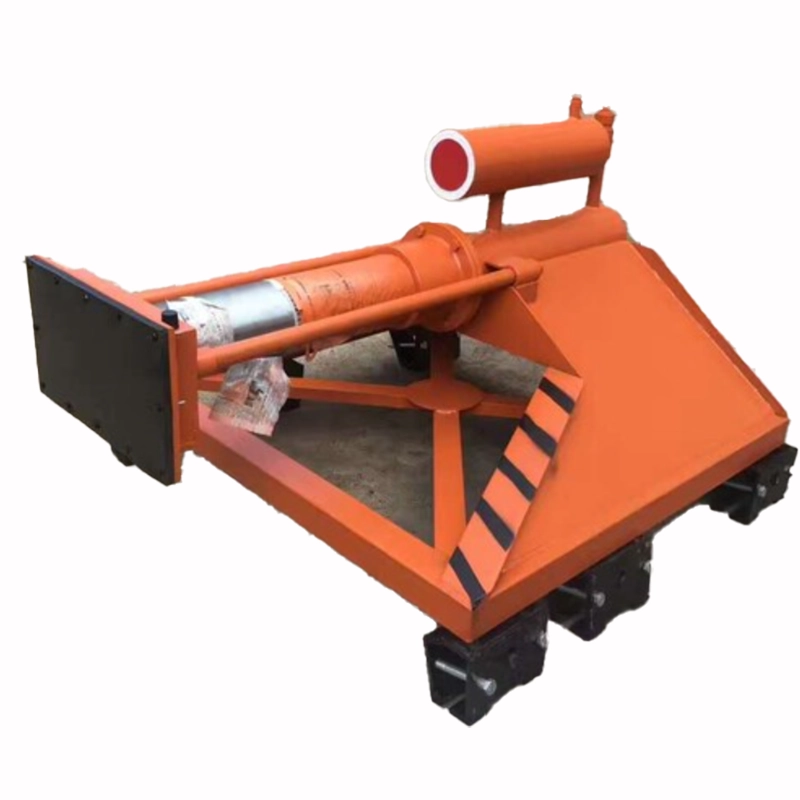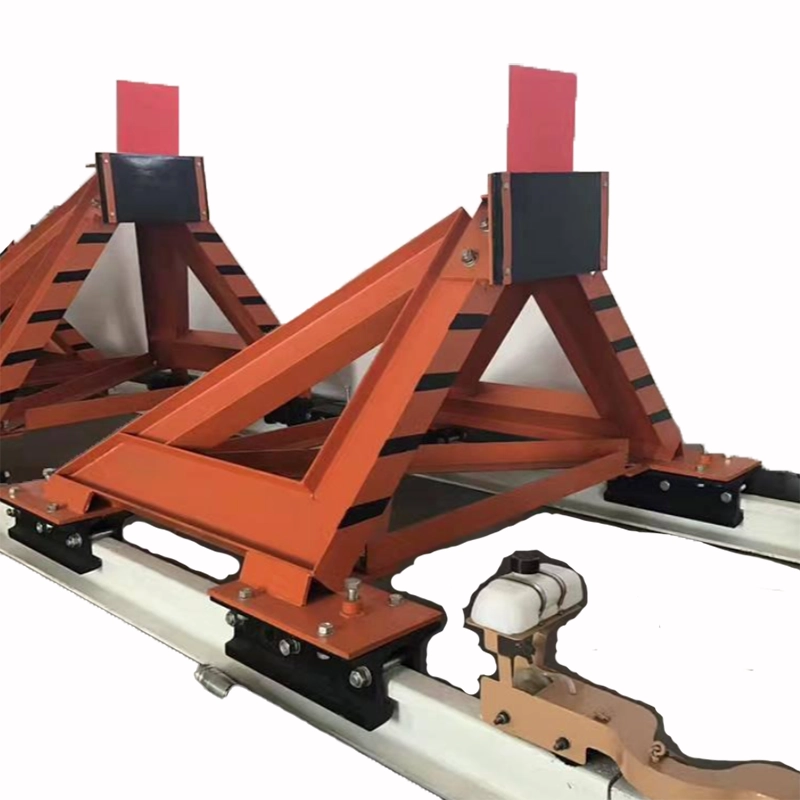Fixed Buffer Stop for Mining
Overview
Fixed Buffer Stop (FBS) is a purpose-built device that soaks up impact energy where material or equipment contacts conveyor ends and transfer zones. The FBS uses a strong, corrosion-resistant frame combined with replaceable sacrificial pads (options include UHMWPE or bonded rubber) and engineered energy-dissipation components sized for the application. Units ship mostly assembled and install with anchor bolts, letting teams retrofit existing infrastructure quickly.
CORE FEATURES
Modular sacrificial pads (UHMWPE or rubber) sized for belt width — quick-swap cartridges.
Heavy gauge steel frame with hot-dip galvanised or stainless finish options.
Bolt-on baseplate and anchor template for concrete or steel foundations.
Energy-rating table and model selection guidance included with each quote.
Replaceable wear shims and clamp assemblies for easy servicing.
Optional vibration isolators and integrated sensor module for event logging.
TYPICAL APPLICATIONS
• End-of-line stops on belt conveyors and apron feeders.
• Under-chute impact protection at transfer points and loading chutes.
• Light-duty rail and gantry end-stops inside plants.
• Any location where repeated or occasional drops cause belt or structure damage.
• Retrofit projects where recurring buffer-related faults need a permanent fix.
KEY ADVANTAGES
• Effective energy control — reduces peak forces transmitted into belts, rollers and structures so components last longer.
• Easy retrofit — bolt-down baseplate and supplied drilling template make fitting to existing foundations straightforward.
• Fast field serviceability — pad cartridges are replaceable without cutting or welding; minimal tools required.
• Built for harsh sites — durable finishes and wear materials resist abrasion, moisture and corrosive atmospheres.
• Scalable and configurable — choose a standard model or specify higher-capacity or custom-damped units for exceptional single-event energy.
• Optional monitoring — impact sensing packages available to log events and enable condition-based maintenance.
INSPECTION CHECKLIST
Daily: clear debris and inspect pad face for gouges, cuts or contamination.
Weekly: ensure pad faces contact loads evenly and clamps are secure.
Quarterly: torque-check anchor bolts, inspect welds and frame for cracks, test sensors.
After significant impact: take unit out of service, perform a full visual and dimensional check, and replace damaged cartridges before returning to service.
TECHNICAL DOCUMENTS & CERTIFICATION
Standard deliveries include a datasheet, anchor template, installation instructions and a wear/replacement guide. Custom or high-energy models are supplied with engineering calculations and mounting drawings on request.
INSTALLATION & COMMISSIONING
• Pre-install checks: confirm foundation type and strength; verify anchor bolt specification and torque values.
• Mechanical installation: position assembled frame, drill and set anchors per supplied template, tighten to specified torque, fit pad cartridges and clamps.
• Commissioning tests: perform controlled low-energy impacts to check alignment, clearances and pad response. If fitted, connect and test impact sensor outputs and alarms.
• Documentation: keep a commissioning log with torque values, pad serials and baseline photos.
ORDERING & DELIVERY
When requesting a quote, please provide: conveyor width and belt centerline, estimated impact height or chute geometry, approximate falling mass or throughput, foundation type (concrete or steel), environment (wet/dusty/corrosive) and desired delivery window. Typical lead times for standard FBS models are a few weeks; stainless or custom-engineered versions take longer and will be scheduled at quotation.
PRICING GUIDANCE
Price depends on model capacity, finish (galvanised vs stainless), additional options (sensors, vibration mounts, hydraulic damping), and whether installation services are required. Quotes include the base assembly and pad set; spares and installation labor are priced separately.
FAQs
Q:What is the normal pad service life?
A: That depends on impact severity and frequency. Heavy, continuous use shortens life; low-duty applications may see pads last much longer. Keep a spare set for critical sites.
Q: Are there options for corrosive or high-temperature sites?
A: Yes. We can supply stainless frames and specialist pad materials; these options affect lead time and cost.
Q: Can the unit be retrofitted to an existing conveyor?
A: Yes. The FBS is designed to be bolted to a prepared foundation and typically requires only anchor drilling and pad fitting.


